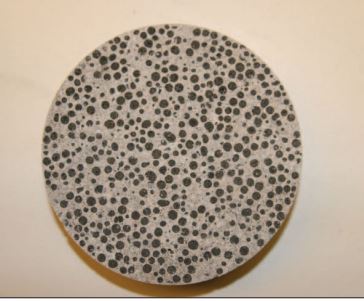Various tests such as cube test, split tensile test etc are performed on the concrete to assess its properties. These tests are done on a specially made specimen which may not represent the actual structure. These tests required pre-planning. The specimen get destroyed in the process.
To overcome these problems, Non destructive tests have been developed. The main advantages of these tests are that they non-destructive in nature. It permits retesting at the same or nearly the same, location so that changes with time can be monitored. It can be used in buildings.
Non Destructive tests measure few index properties of concrete material to estimate its strength, durability and elastic parameters.
These properties include hardness, rebound number, and its ability to allow ultrasonic pulse velocity to propagate through concrete. It also helps to investigate crack depth, micro-cracks, and deterioration of concrete.
Though these are simple method but require the skilled and experienced workforce to interpret and analyze test results.
What these tests are meant to do?
- Estimate uniformity and homogeneity of the concrete.
- Detecting cracks and imperfections within concrete.
- Estimate the in-situ compressive strength.
- Measure elastic modulus.
- Determine chloride and sulfate content.
- Monitor changes in the structure of concrete for the effect of time.
Types of Non-Destructive Tests on Concrete
Based on the equipment used and the principle of working Non-Destructive tests can be classified as follows:
Rebound Hammer Method
A Swiss engineer named Ernst Schmidt (Zurich) tried developing a test hammer so that the hardness of concrete can be measured by the Rebound principle. This hammer is often known as Schmidt Rebound Hammer.
Principle:
The rebound of an elastic mass depends on the hardness of the surface on which the mass strike.
Procedure:
The hammer weighs about 1.8 kg and consists of a spring-controlled hammer mass which slides over a plunger withing the tubular housing being provided. The hammer is forced to the surface of the concrete structure by the spring and the rebound distance of hammer is measured.
The test surface can be horizontal, vertical or at any angle with the only requirement that the instrument must be calibrated in that position. Calibration is done with cylinders of the same cement and aggregate. Many readings are taken and the average represents the rebound number of the cylinder.
Advantages:
- Easily usable.
- Uniformity can be determined.
- Inexpensive
- Used for the Rehabilitation of Monuments.
Disadvantages:
- Results are not directly related to strength and deformation property.
- The equipment requires regular cleaning.
- Not accurate in detecting flaws.
Penetration Method
Penetration method is used to determine the uniformity of concrete, imperfections, and strength of the concrete. It is performed based on the procedures and specifications of the Standard Test Method for Penetration Resistance of Hardened Concrete (ASTM C 803/803M-97) or British Standard (BS 1881 Part 207).
Apparatus: Probe, Measurement equipment (Vernier calliper, depth gauge), positioning device.
Procedure:
- Place a positioning device on the concrete surface.
- Fire the probe into the concrete (probe is mounted in the driver unit properly)
- Remove the positioning device.
- Tap the probe with a hammer to ensure if it is firmly embedded.
- Place the measuring base plate over the probe.
Advantages:
- It provides quick means of checking the quality and maturity of in situ concrete.
- It also assesses strength development with curing.
Disadvantages:
- Doesn’t provide accurate values of concrete strength.
Pull Out Test Method
Principle:
The force required to pull a steel disc embedded in fresh concrete is measured and the correlation between compressive strength of concrete and the forces is established.
Method:
Rod-shaped equipment made of steel is made to cast into the concrete to a depth of 3 inches (7.62cm), which is being pulled out and the force required for it to get out of the concrete is recorded. While performing this, the concrete remains in tension and shear simultaneously but the force recorded is made to correlate with the compressive strength of the concrete.
Advantages:
- It provides a measure of the strength of the concrete in local.
- It provides a piece of slight information about the maturity and development of the strength of concrete.
Disadvantages:
- This method requires pre-planning.
Ultrasonic Pulse Velocity Method
It is a Dynamic type of Non-Destructive Test and tests concrete strength in situ. It records the time interval the Ultrasonic pulse requires while passing through the concrete.
Equipment: Pulse generator, Pulse receiver.
Method:
The surface of the concrete under the test must be made smooth. The path length required for an ultrasonic pulse to travel should be at least 12inces (30cm) so that errors can be avoided. A temperature of range from 5 to 30 Degree Celsius is required to be maintained. The pulse path must be free from the effect of steel or any other material affecting pulse.
Advantages:
- Ideal for testing uniformity.
- It is suitable for test structure under construction.
- Cracks can be detected.
Disadvantages:
- Less used in determining strength.
Radioactive Method
These are generally used for determining the location of reinforcement in the concrete and measuring density. Not suitable for concrete thicker up to 45cm and maybe expensive comparatively.
It measures internal defects and variations, porosity, geometric variation, changes in density, and misaligned parts.
Advantages:
- Records can be kept permanently.
- Portable.
Disadvantages:
- Hazardous nature of radiation.
- Expensive.
- Skilled manpower required.


